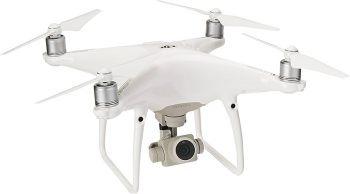- High precision mapping
- Excellent camera quality
- Long flight time
- High-quality imaging
- Advanced flight features
- Long flight time
- Expensive
- Requires specialized knowledge
- High cost
- Requires practice to master
DJI Phantom 4 RTK vs DJI Phantom 4 Advanced
The world of phantom drones has witnessed significant advancements in recent years, with DJI being at the forefront of innovation. Two of their flagship models, the DJI Phantom 4 RTK and the DJI Phantom 4 Advanced, have garnered considerable attention from professionals and enthusiasts alike. While both drones share some similarities, they also exhibit distinct differences that set them apart. In this comparison, we'll delve into the features, capabilities, and use cases of these two phantom drones to help you decide which one best suits your needs.
Design and Build
Both the Phantom 4 RTK and Phantom 4 Advanced boast a sturdy and compact design, with a magnesium alloy body that provides excellent strength-to-weight ratio. The drones' aerodynamic shape and retractable landing gear ensure smooth takeoffs and landings. However, the Phantom 4 RTK has a slightly more rugged build, with a reinforced structure to accommodate its advanced RTK (Real-Time Kinematic) system.
Camera and Imaging
The Phantom 4 Advanced is equipped with a 1-inch 20-megapixel CMOS sensor, capable of capturing stunning 4K videos at 60fps and 14fps still images. The camera also features a mechanical shutter, which reduces rolling shutter distortion and ensures sharper images. In contrast, the Phantom 4 RTK has a similar 1-inch 20-megapixel CMOS sensor, but with a few key differences. The RTK model's camera is optimized for surveying and mapping applications, with improved metadata collection and enhanced image processing capabilities.
RTK Technology
The Phantom 4 RTK is designed specifically for high-precision aerial mapping and surveying. Its RTK system enables the drone to achieve centimeter-level accuracy, making it an ideal choice for applications such as topographic mapping, construction monitoring, and precision agriculture. The RTK system uses a combination of GPS, GLONASS, and BeiDou satellite constellations, along with a high-precision receiver, to provide accurate positioning data. In contrast, the Phantom 4 Advanced relies on traditional GPS and GLONASS systems, which, while still accurate, may not offer the same level of precision as the RTK system.
Flight Performance
Both drones are powered by DJI's advanced flight control system, which provides stable and smooth flight performance. The Phantom 4 Advanced has a maximum speed of 45 mph (72 km/h) and a flight time of up to 30 minutes. The Phantom 4 RTK, on the other hand, has a slightly reduced top speed of 36 mph (58 km/h) due to its heavier payload capacity and RTK system. However, the RTK model's flight time remains similar, at up to 30 minutes.
Price and Value
The DJI Phantom 4 Advanced is generally priced lower than the Phantom 4 RTK, with a retail price of around $1,500. The Phantom 4 RTK, on the other hand, starts at around $6,000, reflecting its advanced RTK capabilities and specialized features.
Conclusion
In conclusion, the DJI Phantom 4 RTK and Phantom 4 Advanced are both exceptional phantom drones, but they cater to different needs and applications. If you're a professional surveyor, mapper, or engineer requiring high-precision aerial data, the Phantom 4 RTK is the clear choice. Its advanced RTK system and specialized camera capabilities make it an industry-leading solution for these applications.
On the other hand, if you're a photographer, filmmaker, or enthusiast looking for a high-quality drone with excellent camera capabilities, the Phantom 4 Advanced may be the better option. Its lower price point and impressive imaging capabilities make it an attractive choice for those who don't require the advanced precision of the RTK system.
Ultimately, the decision between these two phantom drones comes down to your specific needs and budget. By carefully considering the features, capabilities, and pricing of each model, you'll be able to choose the perfect drone for your next project or adventure.































